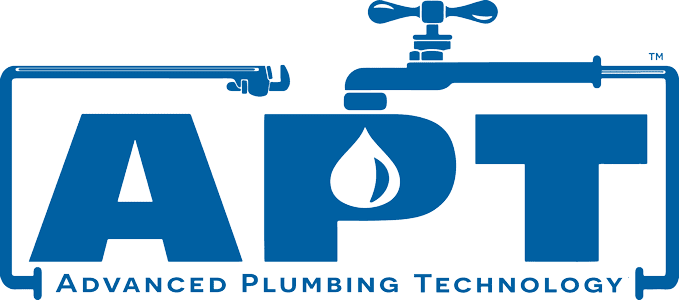Sump Pump 101: All You Need to Know About Basement Flooding Prevention
September 24th, 2023Posted by Brian Shoemaker
Basement flooding can be a homeowner’s worst nightmare, leading to property damage, mold growth, and potential health hazards. At Advanced Plumbing Technology, we understand the importance of preventing basement flooding and protecting your home’s foundation. In this comprehensive guide, we will delve into the world of sump pumps and how they play a crucial role in basement flooding prevention. Whether you’re a seasoned homeowner or a first-time buyer, this article will equip you with the knowledge you need to make informed decisions and safeguard your property.
Understanding Basement Flooding
Before we delve into the details of sump pumps, it’s essential to understand the root causes of basement flooding. Heavy rainfall, melting snow, and groundwater accumulation are common culprits that can lead to water seeping into your basement. This excess water not only compromises the structural integrity of your home’s foundation but also creates a conducive environment for mold and mildew growth.
The Role of Sump Pumps
Sump pumps are your home’s first line of defense against basement flooding. These mechanical devices are designed to efficiently remove accumulated water from the sump pit, a designated area in your basement where water collects. When water levels reach a certain point, the sump pump activates and pumps the water away from your home’s foundation, preventing flooding and water damage.
Types of Sump Pumps
There are two primary types of sump pumps: submersible and pedestal.
Submersible Sump Pumps
Submersible sump pumps are installed within the sump pit itself. These pumps are designed to operate underwater, making them a discreet and quiet option. Their submerged placement also helps reduce the risk of overheating, ensuring the pump’s longevity.
Pedestal Sump Pumps
Pedestal sump pumps, on the other hand, are positioned above the sump pit. While they are more visible than submersible pumps, they are easier to access for maintenance and repairs. Pedestal pumps are an excellent choice for homeowners who prioritize easy maintenance and longevity.
Sump Pump Components
A sump pump consists of several key components that work in harmony to keep your basement dry.
Sump Pit
The sump pit is a basin located in the lowest part of your basement floor. It collects excess water, directing it towards the pump to be discharged away from your home.
Float Switch
The float switch is responsible for activating the pump when water levels rise. As the water in the sump pit reaches a certain height, the float switch triggers the pump to start working.
Check Valve
The check valve ensures that water pumped out of the sump pit does not flow back into the pit after the pump turns off. This prevents unnecessary cycling of the pump and prolongs its lifespan.
Discharge Pipe
The discharge pipe is the conduit through which water is expelled from the sump pump to a designated area away from your home. Proper installation of the discharge pipe is crucial to ensure efficient water removal.
Choosing the Right Sump Pump
Selecting the right sump pump for your home depends on various factors, including the size of your basement, the water table in your area, and your budget.
Horsepower (HP)
Sump pumps come in different horsepower options, ranging from 1/3 HP to 1 HP. The more powerful the pump, the faster it can remove water from the sump pit. Consider the average water accumulation in your basement to determine the appropriate horsepower.
Pump Capacity
The pump’s capacity is measured in gallons per hour (GPH) or gallons per minute (GPM). A higher capacity is essential for areas prone to heavy rainfall or rapid water accumulation.
Backup Systems
Power outages often coincide with heavy storms, which are prime times for basement flooding. Investing in a sump pump with a battery backup system ensures that your pump will continue to function even during power failures.
Sump Pump Maintenance
To ensure the reliability of your sump pump, regular maintenance is crucial.
Check the Float Switch
Periodically test the float switch by pouring water into the sump pit. Ensure that the pump activates and drains the water as expected.
Clear Debris
Inspect the sump pit for any debris or dirt that could clog the pump. Keeping the pit clean allows for unobstructed water flow.
Test the Pump
Perform routine tests on your sump pump to verify its functionality. Pour water into the pit and observe the pump’s response.
Battery Check
If your sump pump has a battery backup system, check the battery regularly and replace it if necessary.
Installation Considerations
Proper installation is key to the effectiveness of your sump pump.
Location
Place the sump pump in a low-lying area of your basement where water tends to accumulate. Ensure that the pump is stable and level.
Discharge Pipe
Direct the discharge pipe away from your home’s foundation and any walkways. Make sure the water is being directed to a safe drainage area.
Professional Installation
For optimal results, consider hiring a professional plumber to install your sump pump. Their expertise ensures proper installation and reduces the risk of potential issues.
Conclusion
In conclusion, a sump pump is a crucial investment for every homeowner looking to protect their property from the damaging effects of basement flooding. By understanding the role of sump pumps, the different types available, and the factors to consider when choosing and maintaining one, you are well-equipped to make informed decisions for your home’s safety. At Advanced Plumbing Technology, we are dedicated to helping you safeguard your property and providing expert solutions for all your plumbing needs. Don’t let basement flooding catch you off guard—take proactive measures with a reliable sump pump system.
